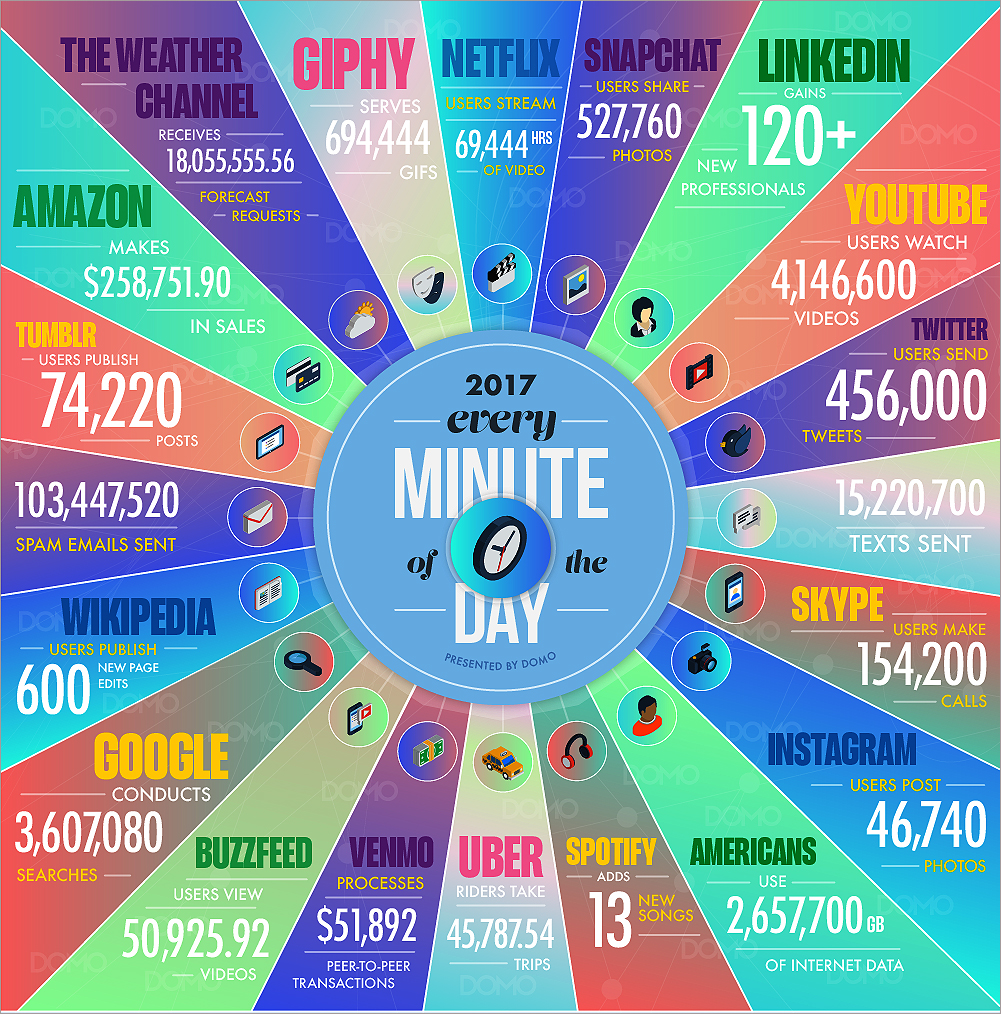Why Oracle’s Autonomous Database is required to manage data during transformation

In our digital world of today, human expressions of speech and thought are being replaced by the continuous creation of data. As an example, expressive data is being created every minute on Facebook and Twitter. 500,000+ comments are posted on Facebook, 400,000+ Tweets are sent out on Twitter, 45,000+ images are posted on Instagram, 16M text messages and 156M emails are sent out across the world, every minute.
While every urban citizen and global business knows about this, their ability to manage and use these expressions of data, for a productive purpose has become increasingly elusive.
Huge repositories of data are a double-edged sword. Since they have scale and real time context, they are statistically a close subset of the real universe, and hence exciting. On the other hand, because they are so vast, distributed, structured, unstructured, managing them within a framework, using traditional database tools is virtually impossible.
This is one of the reasons why Oracle created the Oracle Autonomous Database, that in some ways manages itself and reduces the burden on the legions of database administrators who would otherwise be required to manage and keep it functional.
Oracle has leveraged on its forty plus years of managing data and has built an intelligent database that can self-manage itself. Oracle Autonomous Database uses machine learning to provide self-driving, self-repairing, and self-securing capabilities that automate typical management and security processes in database systems like patching, tuning and upgrading.
Oracle Autonomous Database is a cloud-based application, which performs using Oracle Cloud Infrastructure, and provides 99.995% reliability and availability, amounting to a downtime of less than 30 minutes per year. Oracle Autonomous Database has also been benchmarked to perform at a lower cost than other alternatives.


Says, Abdul Rahman Al Thehaiban, Senior Vice President Technology, MEA and CEE, Oracle, “Nobody knows data better than Oracle. Oracle has always been known as the master of data management for the last 40 years. Throughout this journey we have come across business challenges and we believe we were able to demonstrate strength within the positioning of our database and our business application.”
Over the last decade, with the adoption of cloud as a platform for business, the challenge for Oracle was not just to modernise the core engine of its database, but also to migrate the whole platform to a cloud infrastructure.
On the database side, because of the sheer volume of data and the complexities of the aggregated data inside organisations, Oracle soon realised that conventional database technologies would not be able to provide the answer. A typical challenge in the digital economy is the source of information and the source of data are different.
“If you structure the vast volumes of data generated by digital economies using traditional ways of managing data, you will not be able to get the best out of it,” says Al Thehaiban
Using conventional database structures, you would only get answers if you queried the database within its known limits. But what if the database gave you answers to questions that you could never imagine asking it. “If you broader that vision, then things will be different. You will be getting answers for questions you have not even asked for,” indicates Al Thehaiban. And that is the litmus test for Oracle’s Autonomous Database.
Al Thehaiban points out that when the cloud era came in, Oracle took a hard look at how its customers could benefit from its strengths in this unique area of databases, and how it could provide a full stack of offerings. “We initiated based on data management. We thought of Autonomous as the launch of better management of the data itself,” says Al Thehaiban.
Oracle has now combined, a cloud platform, machine learning, and artificial intelligence, to create a modern database that delivers on the challenges faced by digital organisations. For end users, the biggest benefit is the reduced complexity and reduced cost around management of the database.
Data security, performance optimisation, integration, are now automated inside Oracle’s Autonomous Database, reducing the need for an administrator’s oversight.
Oracle is also leveraging its data warehousing strength in Autonomous Database, to manage distributed databases that are so typically generated in a multi-cloud environment. In its Q4 2019 earnings report, almost 40% of the new autonomous customers are using data warehousing. Points out Al Thehaiban, “If you turn the clock back ten years, customers were talking about business intelligence and data warehousing because of the data they have.”
So how would customers work out the return on investment for Oracle’s Autonomous Database? While there are significant savings in terms of database administrator costs, operational costs, and other benefits stemming from agility and scalability, Al Thehaiban believes the return on investment should be calculated on another metric.
Oracle Autonomous Database is a playground for applying machine learning and artificial intelligence tools. In other words, in the absence of the Autonomous Database, end users would struggle to build their own database to apply intelligence tools. For key market segments in the region like retail, manufacturing, healthcare, Autonomous Database is a critical element of their continuity and direction.
“This is not about reduction of cost or boosting the growth of business. I think the measurement criteria is completely different than in the past. The mechanism of calculating the return on investment would be driven on capitalising on the innovation they have,” says Al Thehaiban.
Al Thehaiban feels that return on investment should be calculated based on the innovation created from the implementation of Autonomous Database and its data management.
“We have been in the market for a long time and the whole era has completely changed. We have transformed completely from a different era to another era, while addressing all the requirements of business and business applications. Based on all these, we came up with a better understanding of the customer and customer requirements. We understand exactly the benefit of Autonomous Database and how that could help them with being innovative and creative,” summarizes Al Thehaiban.
https://www.youtube.com/watch?v=sqem8lZScd4&list=PLQO0SRAjb7G1Ni_61XWVSo1bXvI2czZhs&index=1
Key takeaways
- This is not about reduction of cost or boosting the growth of business
- Calculating the return on investment would be driven on capitalising the innovation they have.
- For retail, manufacturing, healthcare, Autonomous Database is a critical element of continuity and direction.
- Autonomous is the launch of better management of data itself.
- What if the database gave you answers to questions you could never imagine asking.





